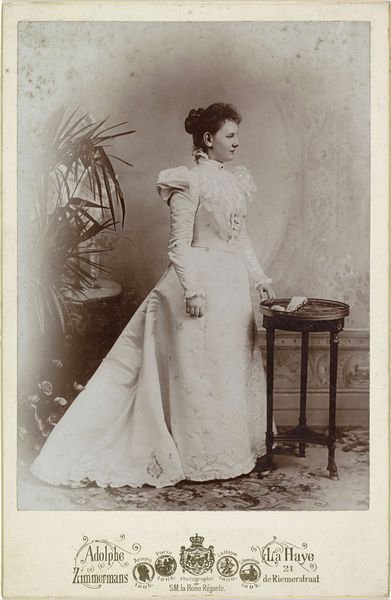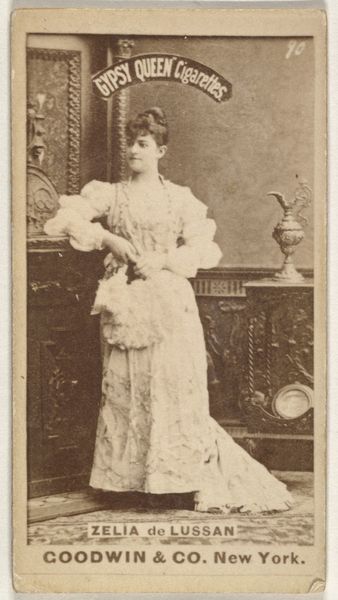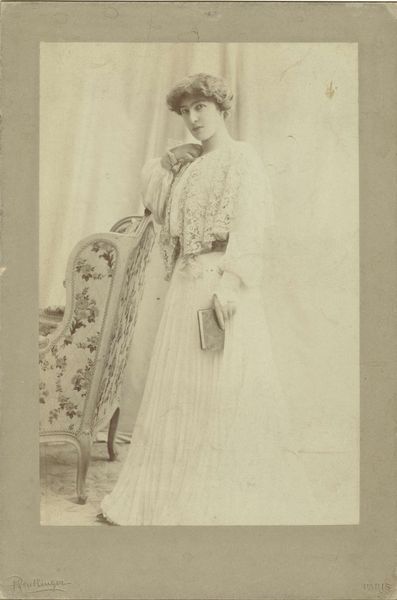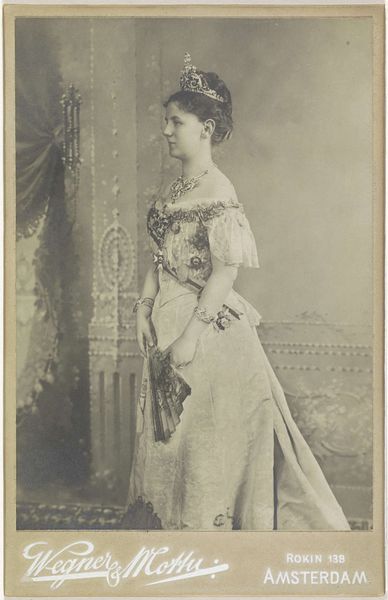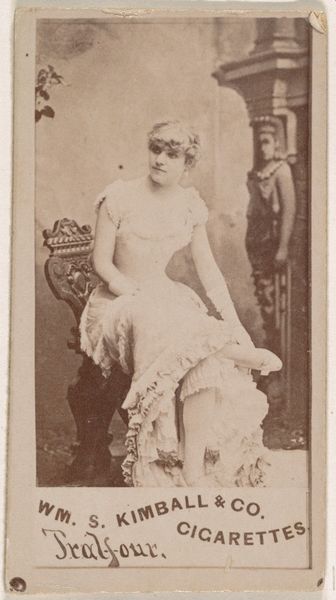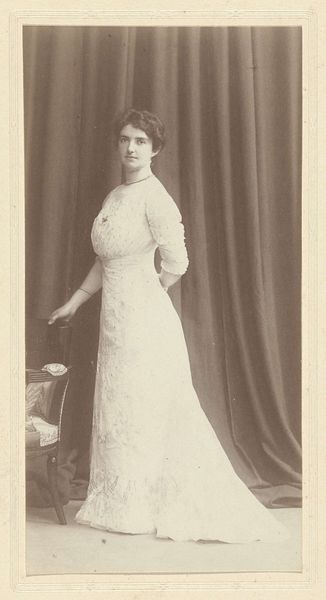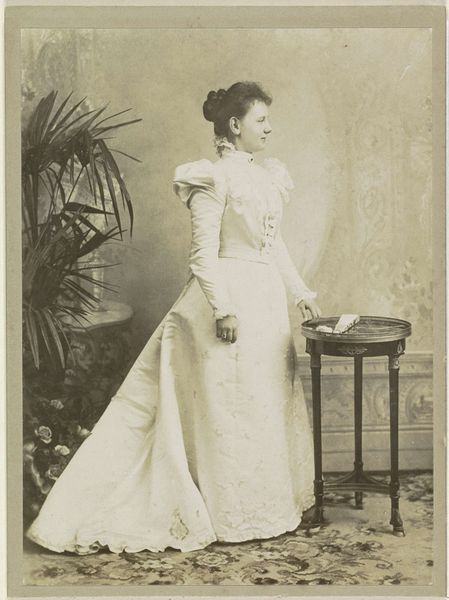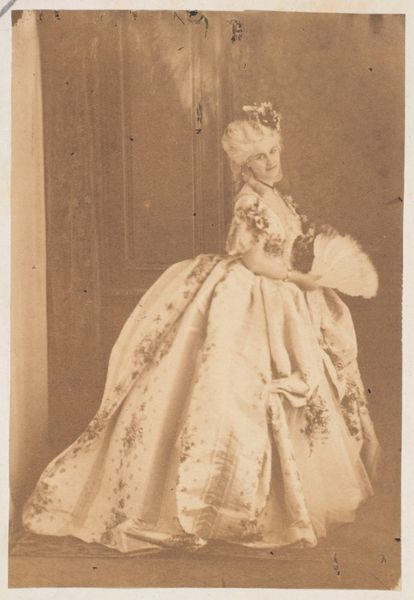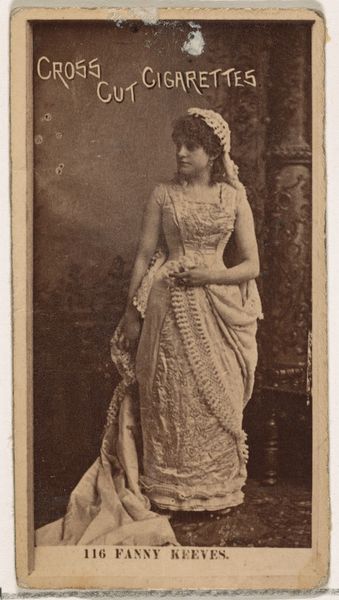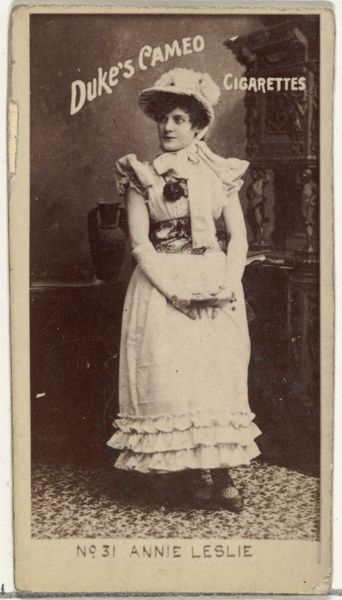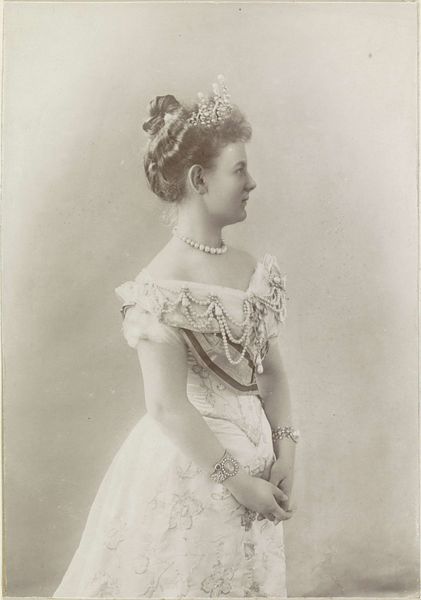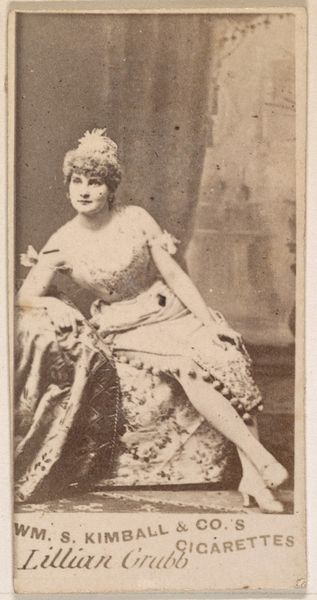
#
pencil drawn
#
photo of handprinted image
#
wedding photograph
#
photo restoration
#
historical photography
#
historical fashion
#
old-timey
#
19th century
#
historical font
#
columned text
Dimensions: height 105 mm, width 62 mm
Copyright: Rijks Museum: Open Domain
Curator: Take a look at this compelling portrait of Queen Wilhelmina, taken in 1905 by Wegner & Mottu. Editor: The immediate impression is one of…containment. There's so much ornate detail, so many visual markers of power and wealth, and yet her expression feels…closed off, almost melancholic. Curator: Absolutely. Notice how she’s presented: the diadem, the extravagant stole, the jeweled gown—each element is a carefully chosen symbol of royal authority, constructed to inspire awe and project an image of unwavering leadership. The fan adds another layer; a symbol of status, and almost...protection. Editor: The fan is interesting. It does add to that feeling of reserve, like she's holding herself apart, both physically and emotionally. What is it about the cultural memory of royalty, so often pictured like this, in an eternal state of guarded composure? Perhaps they saw themselves as living icons? Curator: Well, royalty needed to cultivate an image. Images like these helped cement a perception of divine right. Also, remember Wilhelmina was relatively young when she ascended the throne. Perhaps that reserve masks a certain vulnerability in the face of such weighty responsibility. Editor: True. The visual language of the crown, the dress, those signifiers speak so loudly that perhaps the woman herself gets lost in the symbols. She’s almost swallowed by the weight of what she represents. Curator: And think about how carefully posed and crafted these photographs were. Everything down to the angle of her hand holding the fan and the fall of her gown are intentional—constructing not just a likeness, but a narrative of royal power. Editor: I agree, it feels less like capturing a person and more like constructing an idea, the embodiment of nation. Which, in turn, prompts the question of what the portrait doesn’t reveal. What aspects of Wilhelmina's personality are deliberately kept from the public gaze? Curator: That's what makes it compelling, though. We're still drawn in, looking for any tiny crack in the façade that reveals something true about the person behind the monarch. Editor: A lasting testament to both the power and the limits of image making! A really fascinating study in symbolism.
Comments
No comments
Be the first to comment and join the conversation on the ultimate creative platform.

